In India’s far southwest, an emerald streak of tropical coast and highland skirts the Arabian Sea. This is a corner of India entirely unlike anywhere else in the country, a seductively serene and slow-paced place shaped over thousands of years by shifting waves of water, time, people, culture and faith. This is Kerala, and once you’re here, you may not want to leave.
It was the promise of sea and a slower pace that first brought us to Kerala and the verdant tropical shores of the Malabar Coast, a welcome remedy after more than a month overlanding through India’s furiously frenetic north.
We were looking forward to time by the ocean, escapes into nature, slowing down on the region’s famous backwaters, and savouring the southern spices and tropical flavours of Kerala’s renowned cuisine.
As we made our way up the steamy coast from clifftop Varkala, through the tranquil backwaters of Alleppey, and on to the charming and historic town of Kochi, we found much more.
Among the market spice stalls, in the local homestays, on the shores of the backwater canals, we discovered the wonderfully warm and welcoming people of Kerala and their unique backstory: one that is inextricably linked to the land.
A Fusion Of People and Place: Human By Nature
Kerala today – its people and its landscapes – is a world fashioned by the power of the sea and the allure of exotic spices and tea leaves.
It’s a tale of ancient kingdoms, maritime trade and colonialism, all of which has led to a gentle blending and connection of people, culture, religion and place unique in all of India.
Some call Kerala ‘God’s Own Country’, a fitting moniker perhaps in the context of the lush landscapes and wide-ranging pantheon of deities peacefully coexisting in the temples, churches, mosques and shrines to be found here.
For us, this multifaceted, interconnected world has stayed with us in the small yet arresting moments we experienced along the way: the serene smile of a Kathakali dancer in Kochi, his face painted vivid yellow, soulful eyes gleaming white above dark streaks of black; a Christian nun at the helm of a narrow boat, veil billowing behind her as the vessel cruised along the backwaters of Alleppey.
Kerala’s diversity of people and faith is mirrored in its varied landscapes and the vast palette of green that decorates them. Palm-fringed beaches give way to glinting backwaters and picturesque rice paddies, rising to a leafy sea of tea plantations that hug the hills of the Western Ghats.
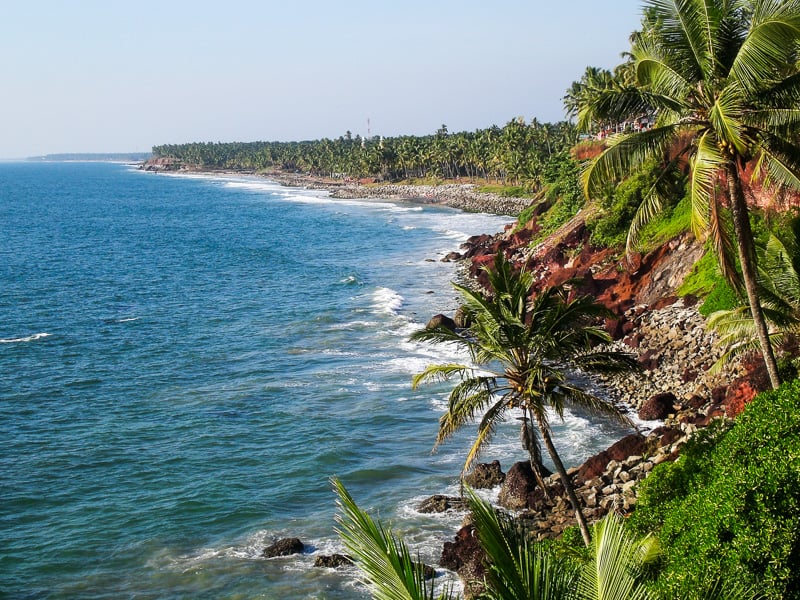
Beaches
Our itinerary for Kerala initially had us visiting the cooler highlands of Munnar in the Western Ghats. Instead, a wayward backpack en route from India’s north meant we bunkered down for a while longer than planned in our first stop, the clifftop community of Varkala.
In truth, an extended stay in this much-loved backpacker hotspot turned out to be just what we needed.
We enjoyed daily meanders through the palm-lined community, lazed on Papanasham Beach at the foot of the cliffs, soaked up spectacular sunsets from the bars and restaurants on the rocky ridge above, and sampled enormous, freshly-caught tiger prawns from the tandoor oven for dinner.
We rang in the new year to the beat of drums and cymbals as a parade of locals welcomed midnight with chants and dancing.
Our longer stay also gave us opportunity to get to know some of these lovely locals, who couldn’t do enough to help us recover our rogue bag and ensure we had everything we needed.
With its distinctive setting and chill vibe, Varkala is – unsurprisingly – a peak tourist destination, particularly between September and March, the best months to visit Kerala.
Step into any one of its yoga retreats or ayurvedic spas though, or leave the clifftop path behind for a nature immersion on the trail north to Kappil Beach, and you’ll quickly relocate your zen.
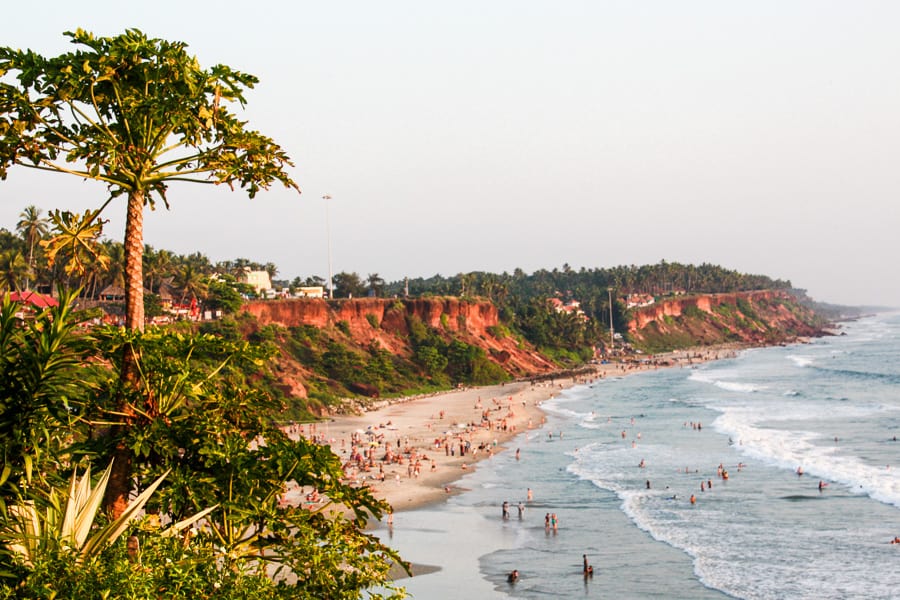
Backwaters
A two-hour train ride north of Varkala, the town of Alleppey (also known as Alapphuza) is a bustling gateway to the tranquil Kerala backwaters. This is the region’s famed labyrinth of canals, lagoons and lakes and it’s one of the most beautiful places in Kerala.
There are various ways to experience the backwaters: in a canal-side homestay, by gentle paddle power in a canoe or kayak, by local ferry. Or by one of Kerala’s most iconic experiences, aboard a traditional houseboat called a kettuvallam.
These unusual thatched boats, with their distinctive arched roofs, were once used to transport rice throughout the waterways. Today, refurbished and reimagined, they carry tourists seeking to escape to a slower, greener, calmer world, if just for a night.
Floating along the backwaters, and watching life unfold along their banks, ranks for us as one of the highlights of Kerala.
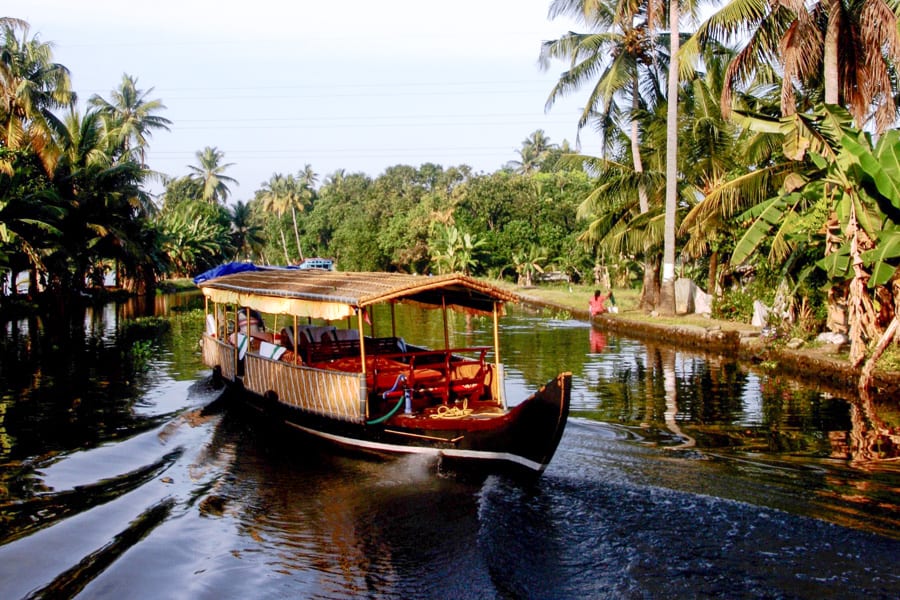
Cruising out of the bustling port at Alleppey, the spluttering whine and beep of rickshaw traffic was soon replaced by the shouts of kids splashing at the water’s edge, locals greeting each other, and the thwack of wet laundry against embankments by brightly dressed local women.
Houses painted pink, white, green and blue edged the waterways, framed by foliage. Church spires occasionally emerged between tall palms. Now and then, the lush vegetation would clear to reveal vivid green rice fields stretching off into the distance. Tiny waterside stores decorated in telecomms advertising displayed soft drinks and crisps.
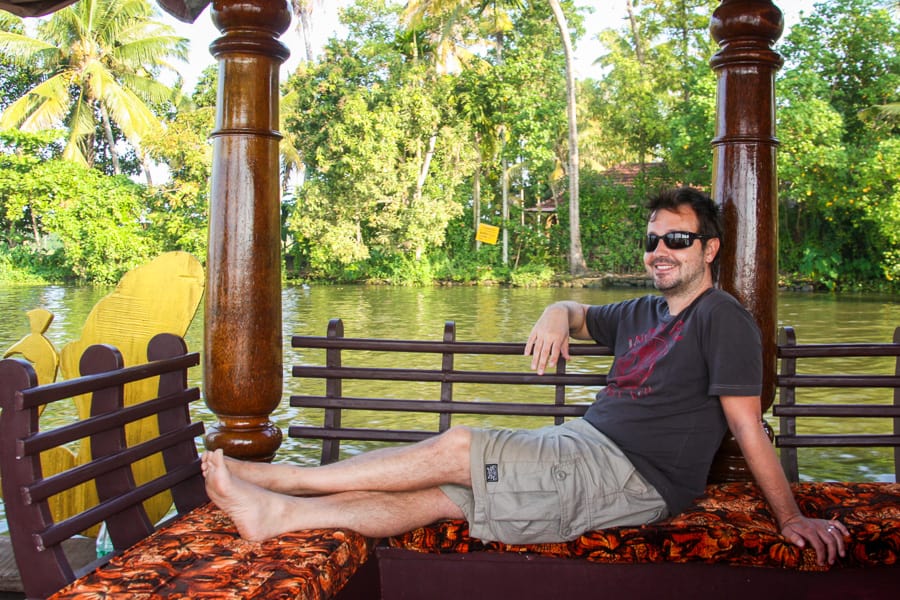
People have built homes and livelihoods on the banks of the backwaters for generations, but the watery environment continues to draw a plethora of birdlife too. We happily whiled away the hours spotting long-limbed herons and gleaming cormorants as they balanced on floating logs, while iridescent kingfishers watched the water keenly for their next meal.
As the sun dropped, families and fishermen paddled home in their boats, and life slowed even further on the Kerala backwaters. Palms silhouetted against the horizon, the water glinting golden, is one of our lingering memories of this tranquil escape.
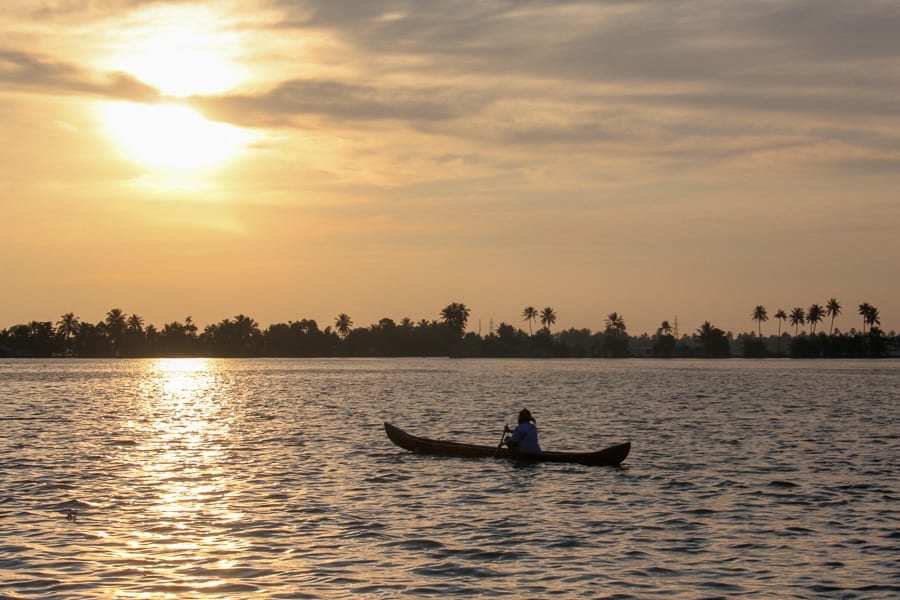
History and Tradition
The last stop on our journey through Kerala was the historic town of Kochi (also called Cochin), an hour and a half further north by train.
Kochi is a charming settlement surrounded by sea, a place where the melting pot of Kerala culture and tradition is on vibrant display.
An important port town and trading centre for centuries, to wander in Kochi (and walking is a great way to explore the old town) is to meander through Kerala’s rich and complex human history.
There are Dutch and British colonial buildings, Portuguese churches (including Saint Francis, thought to be the oldest European church in India), an old Jewish quarter, 400-year-old Chinese fishing nets, and lots of wonderful smelling spice shops. All of it infuses Kochi’s present with a powerful feeling of times past.
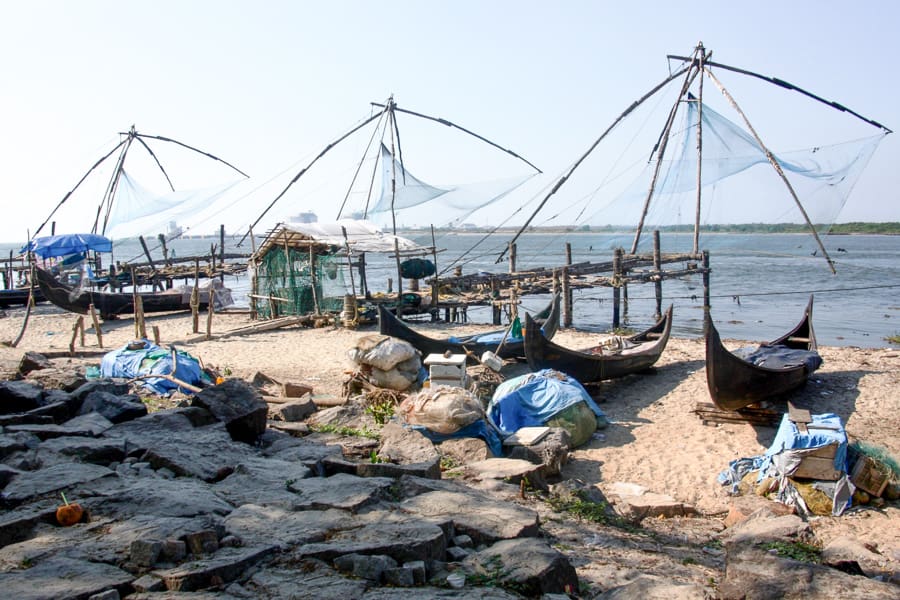
While history and architecture are highlights of a visit to Kochi, this is also a hub for the tradition of Kathakali. An adventure in Kerala isn’t complete without witnessing this elaborate and entrancing dance-drama of Hindu mythology.
The preparation for Kathakali is a performance in itself, during which the highly-trained dancers carefully apply their makeup and costumes, all of which is layered in symbolism and meaning. It was during this pre-theatre session that we first locked eyes with our serene, yellow-painted man.
He sat quietly by the stage, face painted, semi-costumed: a modern Keralan about to perform an ancient religious story, in a region where the way of life is inextricably linked to the sea, to nature, and to the waves of people, culture and faith that have shaped it over time.
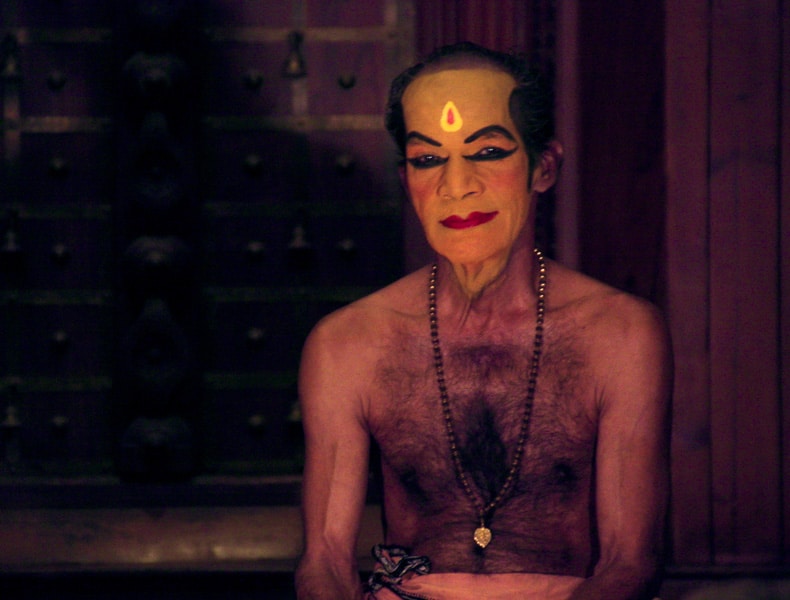
In that moment, his expressive eyes and warm smile captured for us our experience of Kerala: a place that is, irrepressibly, human by nature.
*Human By Nature is a campaign by Kerala Tourism that celebrates the people and landscapes of Kerala through real stories and traveller experiences like ours. This post was sponsored by Kerala Tourism, and we’re delighted to share our memories of this unique and vibrant corner of India. All thoughts and opinions are our own.

Beautifully written. I was entranced and right along with you experiencing the sights, sounds, and smells.
Is there a photo of the rowing nun? If not, I can picture her in my mind. Thanks for the wonderful post. We have travelled to many corners of India, saving Kerala for a future trip still.
Thanks so much for your kind comments, I’m so glad we were able to virtually take you there. The nun was on the bow of a boat and sadly, the image isn’t the best, but we may yet post it somewhere as it is pretty cool all the same. I’m glad you’ve saved Kerala for a future trip, I’m sure it will be a great adventure once the world returns to some semblance of normality. In the meantime take care J&D.